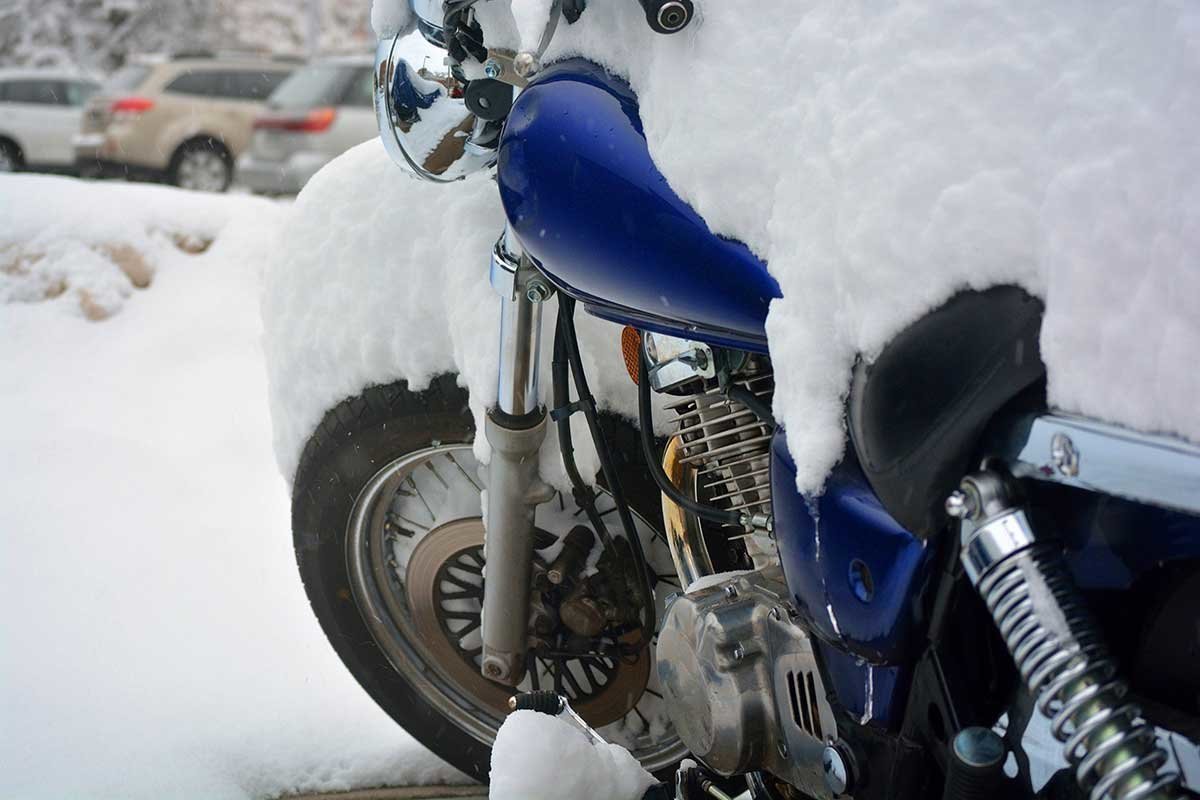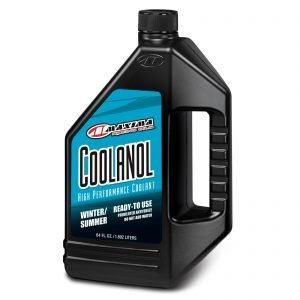2024 Guide for Winterizing Your Motorcycle

Posted By
Ed Merati, Director of Logistics and lifetime motorcycle enthusiast, garage guru. [email protected]
Top 7 Motorcycle Winterizing Questions
It has turned into a seriously cold winter. The Polar Vortex that swept across the Midwest and East Coast brought, as one professor of atmospheric science put it, “temperatures dropping rapidly to values that are dangerous to human life and damaging to buildings and infrastructures.”
We all know what that means for us and our families: extra layers, limited outdoors time and lots of hot drinks. But what does all this extreme weather do to your motorcycle? From corrosion and rust spots to a dead battery, motorcycles feel the effects of cold weather and snow just like we do—especially if they’re sitting idle for months at a time.
Maybe you’ve never winterized your bike before to get it ready for storage. Or maybe you do winterize but aren’t sure if your techniques will stand up to this winter’s freezing temperatures. Either way, we’ve compiled this quick list of common questions and answers to help you keep your motorcycle in perfect form until spring comes back around.
(And in case you’ve got an adventurous streak like this rider trekking across Siberia right now on his Yamaha XT660Z, we’ll also provide a few links to essential cold-weather riding gear.)
1) Do I need to winterize my motorcycle even if I’m going to be riding it before spring?
The word “winterizing” might bring to mind months on end devoid of riding, during which your motorcycle sits hibernating in your garage. But even if you’re going to be riding during the winter, you should still follow some winterizing best practices to keep your motorcycle running at top shape in cold weather conditions.
- If you were putting your bike away for the winter, you would be replacing all your fluids (more on that later). But just because you’ll be winter riding doesn’t mean you can skip this step entirely. Make sure to maintain your fluids—especially your coolant, which can become acidic quickly in the cold weather.
- Wash and wax your motorcycle. Dirt, grease and water spots can affect your bike’s finishes; an all-over cleaning with a motorcycle-specific wash product will help prevent corrosion. Once you’ve washed and dried your ride, wax it. This will help repel salt water that’s common on the road in the winter—and that could otherwise cause corrosion.
- Treat your fuel every time you come back in from a cold-weather ride. (Keep reading for more on this point.)
Another important note: If you’re serious about braving cold weather on your next ride, make sure to do so safely. This Popular Mechanics article outlines top-rated cold weather gear, from a dry pack to boots to a Carhartt helmet liner we won’t leave home without. You’ll find a road-tested set of heated grips and even a full-body heat suit in this list from Motorcycle.com.
2) What should I do if I’m storing my bike outside?
In an ideal world, every motorcycle will be stored carefully inside a heated garage with a breathable, waterproof dust cover. But not everyone has the luxury of a garage or shed. If you fall into the latter camp, then follow these tips:
- Bring the battery and seats inside; these are the parts of your bike most affected by cold weather. Storing your seat indoors and conditioning it with vinyl protector will help prevent it from cracking. To keep your battery in good shape between now and spring, hook your battery to maintainer/charger quickly via quick connector (watch how it’s done in this Revzilla video).
- Even though it might feel counter-intuitive, if your motorcycle is staying outdoors during the winter, it could be best to keep it uncovered. A cover that’s out in the elements can do more harm than good, collecting moisture and pinning it against your motorcycle. (And remember, moisture often equals corrosion.) Note that the same goes for bikes stored indoors: if your cover isn’t breathable and shifts around rather than staying secure, you’re better leaving your motorcycle uncovered.
Whether storing your motorcycle indoors or outdoors, avoid using a tarp as a cover. Although it may be conveniently sitting around your house, it’s just not designed to get the job done. Tarps trap moisture where as a quality motorcycle cover is designed to ventilate.
3) Is it better to empty or fill up my motorcycle’s fuel system?

But which is best for your bike?
If you have a fuel-injected bike, filling it up is a whole lot easier. And it’s also effective: by filling up your fuel system, you drive out any air space and minimize the possibility of water. (Water and oxygen are two major reasons why your fuel gets gummy.) Because an empty tank is also vulnerable to corrosion, we recommend the fill-up method.
Once you’ve filled up your fuel system, add some treatment to top it off completely. Then, run the motor so the treated fuel makes it all the way through your motorcycle’s intakes and injectors.
Pro tip: While your bike is still warm, wax the chain. This gets the 
4) What fluids do I need to replace?
Don’t leave old, broken-down oil in your motorcycle all winter long. Make it a priority to change your oil; a winter-weight oil like a 5W30 will make it easier to start up your bike when spring rolls around.
Also check your coolant system to make sure there’s enough anti-freeze. This is crucial for any rider, but especially if you’re not going to be using your bike until the weather gets warmer.
5) Is fogging oil worth the time and money?

6) Do I really need to put cardboard under the tires?
After you’ve finished filling up your tank, replacing your fluids and giving your motorcycle a full wash and wax, it’s time for the finishing touches: adding a cover and, according to many, cardboard under the wheels. It may seem unnecessary, but putting something underneath your tires—carpet squares will also work—can keep the moisture in your floors from affecting the rubber.
You can also try a bike stand, which brings the added bonus of keeping the weight off the tires. If you’re going the carpet or cardboard route, rotate the wheels every few weeks to prevent flat spots.
7) Do I need to ride my motorcycle once per week until spring?
This is a question you hear a lot, especially when Mother Nature makes a weekly ride difficult. Although regular use is good for your motorcycle, if you commit to a weekly ride during the winter, make sure it’s more than just a quick spin. You need to run your motorcycle to its full operating temperature to cook off moisture and recharge your battery. Otherwise, that quick start can be hard on your motor and moisture could end up where you don’t want it.
Although every rider has their own winterizing routine, the goal should always be to keep your motorcycle in top shape during the winter months. This not only keeps your bike running better for longer, but also helps you get right back to riding as soon as the warm weather rolls back around.
Feel the need for a warm weather ride? Ship it to motorcycle to Florida or California for winter get away! Get a free quote on our world-class motorcycle shipping service.
